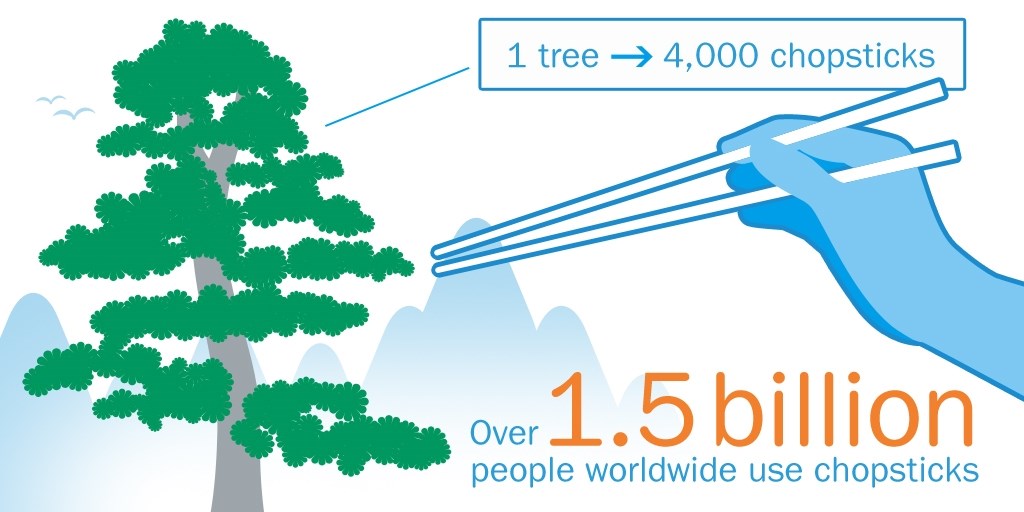It takes roughly one tree for every 4,000 wooden chopsticks. In China, this translates into 20 million trees per year. With deforestation concerns in mind, we should be thinking further. Look at the options and you will end up choosing stainless steel.
When you get ready to have dinner at home or at a restaurant, what do you see in front of you? Hopefully, a delicious meal served on a plate accompanied by stainless steel cutlery.
In typical East-Asian table setting, chopsticks are used instead of metal cutlery. Based only on the population of China, Japan and South Korea, countries where chopsticks are most commonly used, more than 1.5 billion people worldwide use chopsticks – the material of which varies from wood or bamboo to plastic, and in some cases even jade, ivory, silver, or gold.
Tradition of metal
If you are in Korea, however, you will enjoy your food with a pair of metal chopsticks and a matching spoon. In fact, Koreans are the only ones in Asia who use metal chopsticks on a regular basis.
This tradition is theorized to date back to the Baekje Period (18 B.C.–660 A.D.) when royalty used silver chopsticks to detect poison in their food. The Korean practice makes sense. Metal, especially stainless steel, is a highly hygienic and practical solution for something you use every single day. Why is it, then, that stainless is not the prevailing material in chopsticks everywhere in the world?

Get a grip
Even though they all share the same principle, chopstick shape and size varies from culture to culture. Japanese chopsticks, for example, are tapered from handle to tip. Chinese-style chopsticks, on the other hand, have a round tip that is cut blunt.
People might prefer wooden or bamboo chopsticks because they offer better grip. In comparison, metal chopsticks look slippery at first glance. But manufacturers can easily solve this issue by adding grooves and indentations to secure the grip on metal. Are metal chopsticks perhaps heavier than wooden ones? Not at all. Metal chopsticks usually have a hollow core, which makes the eating utensils lighter and easier to handle.
And more importantly, metal chopsticks are good for health. This is not the case when wooden chopsticks are recycled and hygienic issues become a big concern. There you have it: graceful, lightweight, and handy metal chopsticks that are easy to clean and sanitize, too. When made with stainless, you will get years of service out of one pair.
The big picture
Everyday convenience aside, let us take a step back and look at the big picture. In 2013, China’s annual production of disposable wooden chopsticks was estimated to be 80 billion per year. According to the same estimation, 4,000 chopsticks can be carved from one 20-year old tree. This translates into 20 million trees per year.
Deforestation concerns prompted China to introduce a five-percent tax on the wooden utensils in 2006. This has affected Japan the hardest. The price hikes have propelled many restaurants in Japan to make the switch to reusable plastic chopsticks, a pair of which can be reused some 130 times. This is great news for the environment, but the amount of garbage could be drastically reduced if all restaurants and individuals embraced stainless steel utensils and their decades-long life cycle with full recyclability.
Considering that chopsticks and all eating utensils alike are constantly exposed to moist and corrosive elements, like rice and then saliva, they should be highly resistant to corrosion, durable, and hygienic. This criterion, along with exceptional sustainability, makes stainless steel a wise and life cycle thinking choice for chopsticks, too.
